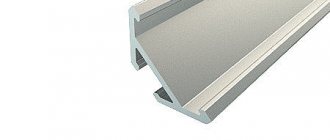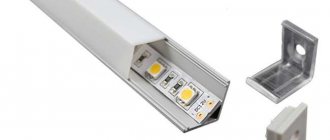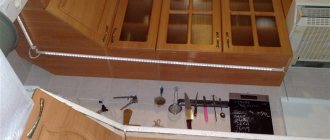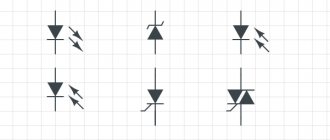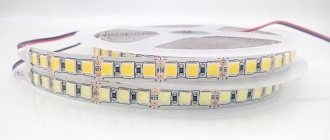Ratchet Tensioner
Now let's look at a ratchet bandage machine assembled according to a slightly different principle. Here is its design and appearance.
The sore spot in cheap models is the ratchet teeth. Unfortunately, they have a habit of staining.
The dimensions of ratchet ones are smaller than those of “helicopters”. Mainly due to the absence of a rocker arm rotating on a pin.
Although if you remove it, you will also get a fairly compact design for carrying in a bag.
But in fully working condition, the difference in length is already significant.
There are also very small varieties among these models that can be used even with one hand. For example INT-20 mini.
An overview of them is presented in the article below.
The mechanism for fixing the tape on ratchets has been significantly redesigned. Everything happens much easier.
Before threading the strip, it is enough to align the slots of the jaws and the rotating shaft. For beginners, this simplification speeds up work at least twice and increases productivity.
The principle of tension itself is also different. On a simple machine, you had to constantly hold the tape clamped with one hand, and spin the helicopter with the other.
With a ratchet, you hold on to a fixed handle, and with a movable lever, you tighten the tape with translational movements up and down.
There is no need to fix anything or constantly press it.
Another difference and plus is the cutting mechanism. In the previously discussed models, it is not fixed anywhere and runs freely on its shaft.
In ratchet, it is equipped with a spring and is always in the desired position. That is, there is simply no such inconvenient moment when the cutter interferes with inserting the tape.
Of the minuses, it should be noted that although these mechanisms manage to work with a solid bandage tape without cutting it into pieces and without taking it out of the packaging, you will experience much more inconvenience than with a “meat grinder”.
The end of the strip will be pretty wrinkled, so you will have to straighten it with a hammer each time.
And sitting on the top of the support, you don’t really want to waste time on this.
Another disadvantage is that the tail of the bandage tape is required to be very long to hook the mechanism. This leads to excess consumption of material.
To tighten with a regular machine, it is enough for about 6-7cm of steel tape to stick out from the yoke. In this case, everything will fit perfectly and securely.
But with a ratchet, such a trick will not work. Here even 10cm will not be enough.
To summarize, we cannot say unequivocally that a ratchet bandage machine or tensioner is better than a conventional one, or vice versa.
The only correct conclusion reached by electricians who have worked for many years with both tools is that the “helicopter” or “meat grinder” IN-20 is a more universal tensioner.
In addition, the tape pressure is stronger. The difference in leverage affects. But the INT-20 ratchet ones are faster. Especially when newbies work with them.
In terms of price quality, you can compare these machines here.
Source
Share the news on social networks
- Related Posts
- Zero break in a 380V socket - clearly, accessible, without formulas. Overvoltage protection in 220V network.
- Contact temperature monitoring without a thermal imager and pyrometer
- How to connect a wifi router - errors and reasons why wifi does not work. Step-by-step instructions for setting up Wi-Fi.
« Previous entry
Characteristics and design
The width of the widest tape that can be pulled together by machine is 20mm. Maximum thickness - 1mm. This is suitable for LKS, LKS-P brand tapes.
Cable ties that can be tightened using INT-20 mini are the SKS and SKS-P series with a width of 7.9mm and 12mm.
The design of the model is very simple and reliable. It includes:
ratchet mechanism
guide device
cutting knife. It is located inside the guide device.
tension axis
movable and fixed handles. They are coated with a non-slip coating.
knife handle. Cutting occurs when this handle is released.
In order for the tool to work for a long time, the moving parts of the ratchet mechanism must be periodically lubricated with grease or lithol.
You should also avoid getting small particles such as sand or dirt into the structure.
Differences and comparison
How does the INT-20 mini differ from other bandage machines?
For example, the classic IN-20 model, which is popularly called a “meat grinder,” has a total length of almost 30 cm. When tensioning the belt, this tool uses a handle to transmit torque to the lead screw.
For some, working with such a tool may not seem very convenient, since you have to constantly monitor the tension process.
Plus, its large dimensions do not add any advantages to it when installed at the height of supports. However, habit and a relatively low price determine the choice of IN-20 for many.
It is also worth noting that the advantage of the “meat grinder” is the possibility of such installation, when there is no excess waste or unnecessary pieces left from the bandage tape, which are then thrown away. How to do this, read the article “Installation of SIP bandage tape”
KVT also has a more modern model - INTu-20. There is much less discomfort when working here. Dimensions are smaller than those of the IN-20 bandage machine.
Its total length is 240mm.
The tension of the tape and tie is produced by translational movements of the upper handle. In this case, the steel strip itself is located almost horizontally to the surface on which the installation is carried out.
The mini model bandage machine has overall dimensions of only 170mm. Thanks to this, the tool can be used at height even with one hand.
Bandage tape tensioner IN-20 and similar.
Let's start the review with the standard tensioner. What does it consist of?
First, there is the frame or housing in which the cutter knife is built.
Next comes a threaded rod with a mechanism for clamping the steel strip. If you take this clamping mechanism apart, you can see a spring inside.
It regulates the pressing force, allowing the handle not to bend.
On top is what is why this machine is actually nicknamed “helicopter” or “meat grinder” - a handle that transmits torque.
On high-quality models, there is a thick washer between the frame and the rotating rocker, which allows you to easily loosen and unscrew the handle back when the steel band is fully tightened.
Without it, the mechanism may “bite”.
Also pay attention to the fact that there is a restrictive ring at the end of the pin. If you get too worked up and suddenly start spinning the rocker back, it will simply unscrew from the pin and fall
If you get too worked up and suddenly start to spin the rocker back, it will simply unscrew from the pin and fall.
On earth this is a small problem. What if you are at the top of a support?
Everything here is fraught with the loss of precious time, and it is not known on whose head this detail may fall. If you don't have such a limiter, make one yourself.
There is nothing complicated about making it. Drill through the end of the pin and insert a steel ring into it, like on a bunch of keys.
There are different types available, differing in both width and thickness. So, some machines do not clamp thin bandage tape, but are designed to work only with thick ones.
The clamping mechanism in them can fit very tightly, or just a little short. Visually this is sometimes not even noticeable.
Therefore, when purchasing, always check the clamp, as they say in kind.
Its backlash also plays a significant role. For some products it is very small, and in other versions, the pressure head generally rotates freely around the pin.
Otherwise, before you thread the bandage tape, you will have to spend a long time trying to find the right position. Which you will agree is not entirely convenient.
The durability of the pin on which the “helicopter” runs is determined by the quality of the metal itself.
You’re unlikely to be able to check it in a store, but with Chinese products, after a few extra-strong tightenings, the thread is simply eaten away and rolled up.
But that’s not so bad. At one point, it may happen that the machine bites and does not follow the thread.
This is where normal work with her ends.
The next important part is the cutter. With frequent use, it certainly becomes dull.
Still, cutting a steel strip is not quite the same as biting copper or aluminum wires.
But this matter is solvable and can easily be sharpened back. The main nuance is the fastening.
It is secured with a screw and a curved handle with special recesses or grooves.
During operation, this screw tends to unwind. Accordingly, the handle and the cutter itself fall out.
If this happened somewhere in thick grass under a support, then it is not a fact that you will find this screw.
Therefore, before each climb up, check how securely the screw is tightened.
The location of the knife in low-quality models can also significantly complicate work. For example, in the photo below, everything is in order with the knife.
Even at the lowest dropped position of the handle, there is a wide gap for the entry of a steel strip.
But with this example, before inserting the tape inside, the handle will have to be bent upward each time, since the cutter itself covers part of the slot. And this is again a waste of time.
Pay attention to all these seemingly insignificant points, directly in the store, when choosing and purchasing a tensioner
When to use yoke and clamp
The yoke can withstand a load of 750-800 kg. If two strips of tape fastened with yokes wrap around a hook, then this is already 1.5 tons. The clamp holds a load of 600 kg or 1.2 tons per hook with double 0.7 mm tape.
You must clearly understand that any reinforcement must contain links of limited strength to protect the SIP line from mechanical damage. What does it mean?
Let’s say if a massive tree falls on a self-supporting insulated wire, then under no circumstances should the wire break, nor should a support collapse, which, in a domino effect, can take down its neighbors. According to the rules, links in linear reinforcement must be destroyed.
At the same time, not some of the most expensive and responsible ones, such as anchor clamps, but cheap parts of the product. Therefore, fastening the hooks with metal tape using clamps and yokes is the weak link.
Often, even designers make mistakes and use only yokes for fastening for all occasions, since they are the most universal and can be used both on intermediate and anchor supports. However, here the principle of universality can also play a negative role. Let's look at why this is so.
Let's say you have a SIP-1 wire with a load-bearing core cross-section of 70 mm2 and a destructive load of 2 tons.
It is secured with an anchor clamp that also has a force of 2 tons. And all this is mounted on a hook with two tapes and yokes that can withstand 1.5 tons.
During subsequent repairs, all that remains is to change two yokes and a piece of bandage tape. In terms of costs, these are mere pennies.
Where will your impulse first occur? Most likely on the wire. And the costs of eliminating the accident will be many times higher. Meanwhile, everything could be resolved at the installation stage by securing the tape not with yokes, but with clamps with a lower destructive load.
For SIPs with even smaller sections and compliance with the weak link condition, bandage tape of smaller thickness and width can be used. With appropriate clamps. All this must be taken into account and calculated at the design stage.
Yoke and clamp - differences
Naturally, the tape itself cannot secure the hook or other equipment to the supports. This will require another additional element:
- yoke
- brace
In addition to appearance, the main difference between a yoke and a clamp is the following:
- The fastener is designed for fastening on intermediate supports where there are no frontal tensile loads
- the yoke is used on anchor supports, taking the entire tensile load of the SIP wire in the anchor span
You cannot use a yoke with a hole width of 20mm for a bandage tape 10mm wide. There must be a clear correspondence of the materials used.
Otherwise it will turn out like this.
It is no coincidence that staples have a special seam in their design. This is done so that, under critical loads, the fastener diverges along this seam and the SIP, together with the hook, falls down, preserving the integrity of both the SIP and the support.



